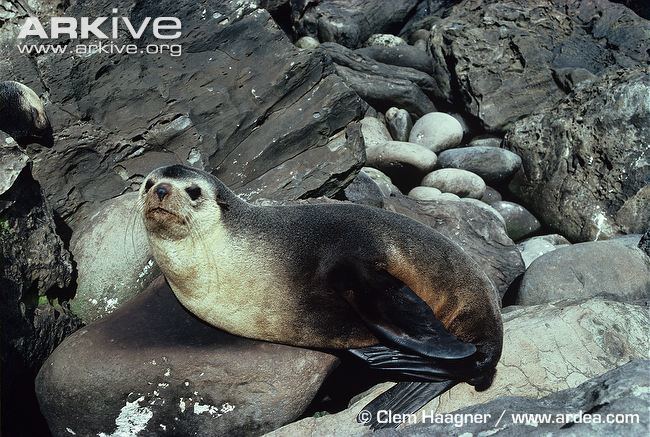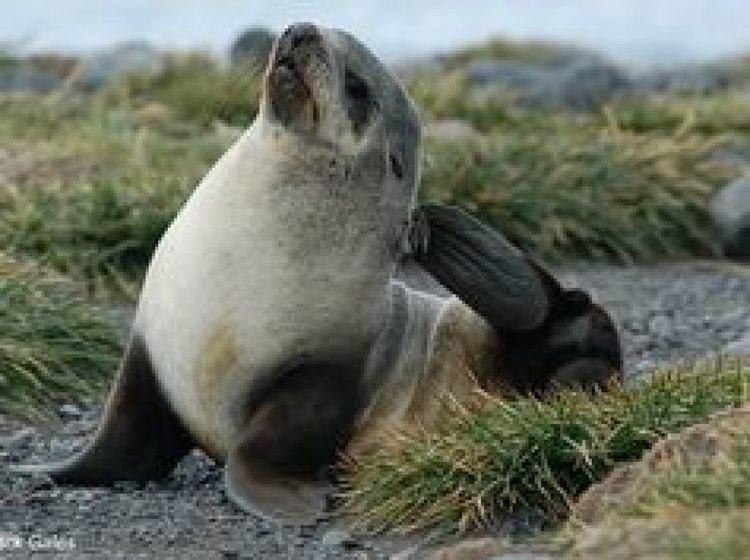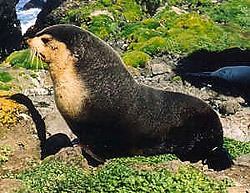Family Otariidae Rank Species | Phylum Chordata Subfamily Arctocephalinae Higher classification Southern fur seals | |
 | ||
Similar Southern fur seals, Eared seal, Antarctic fur seal, Juan Fernández fur seal, Mammal | ||
The subantarctic fur seal (Arctocephalus tropicalis) is found in the southern parts of the Indian, Pacific, and Atlantic Oceans. It was first described by Gray in 1872 from a specimen recovered in northern Australia—hence the inappropriate specific name tropicalis.
Contents
Subantarctic fur seal pup
Description

The subantarctic fur seal is medium-sized compared with other fur seals. Males grow to 2 m and 160 kg, whereas females are substantially smaller—1.4 m and 50 kg. Both sexes have distinctive, creamy-orange chests and faces. Their bellies are more brownish. Males have a dark grey to black back. The females are lighter grey. Pups are black at birth, but molt at about three months old. The snout is short and flat. The flippers are short and broad. Subantarctic fur seals live for about 20–25 years.
Distribution

Subantarctic fur seals are geographically widespread. As their name implies, they generally breed in more northerly locations than the Antarctic fur seals. The largest breeding colonies are on Gough Island in the south Atlantic and Île Amsterdam in the southern part of the Indian Ocean. Breeding grounds are also found at Marion Island in the Prince Edward Islands (where there is an overlap with Antarctic fur seals), Crozet Islands and the Macquarie Island. Where grounds overlap, the subantarctic species can be identified by the orange colour on the chest.

About 300,000 of the species alive today, probably substantially down from when they were first discovered in 1810, as they were hunted for their pelts throughout the 19th century. Populations are recovering rapidly, though, in most areas whilst under the protection of the Convention for the Conservation of Antarctic Seals. A small population on Heard Island is endangered. Unlike the Antarctic fur seal, whose genetic variation is low due to hunting making all but one breeding colony extinct by 1900, the diversity amongst subantarctic specimens remains high.
Diet

Subantarctic fur seals hunt in shallow waters at night, when myctophid fish come close to the surface. They also feed on squid.
